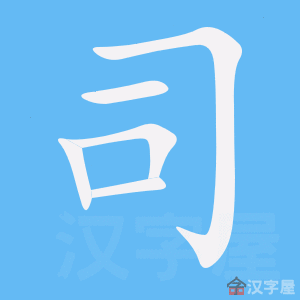|
司铎
sī duó
|
priest
|
|
司鐸
sī duó
|
priest
|
|
司長
sī zhǎng
|
bureau chief
|
|
司馬
sī mǎ
|
Minister of War (official title in pre-Han Chinese states);
two-character surname Sima
|
|
司马光
sī mǎ guāng
|
Sima Guang (1019-1086), politician and historian of Northern Song, author of Comprehensive Mirror for aid in Government 資治通鑒|资治通鉴
|
|
司馬光
sī mǎ guāng
|
Sima Guang (1019-1086), politician and historian of Northern Song, author of Comprehensive Mirror for aid in Government 資治通鑒|资治通鉴
|
|
司马懿
sī mǎ yì
|
Sima Yi (179-251), warlord under Cao Cao and subsequently founder of the Jin dynasty
|
|
司馬懿
sī mǎ yì
|
Sima Yi (179-251), warlord under Cao Cao and subsequently founder of the Jin dynasty
|
|
司马承帧
sī mǎ chéng zhēn
|
Sima Chengzhen (655-735), Daoist priest in Tang dynasty
|
|
司馬承幀
sī mǎ chéng zhēn
|
Sima Chengzhen (655-735), Daoist priest in Tang dynasty
|
|
司馬昭
sī mǎ zhāo
|
Sima Zhao (211-265), military general and statesman of Cao Wei 曹魏[Cao2 Wei4]
|
|
司马昭之心路人皆知
sī mǎ zhāo zhī xīn lù rén jiē zhī
|
lit. Sima Zhao's intentions are obvious to everyone (idiom);
fig. an open secret
|
|
司馬昭之心路人皆知
sī mǎ zhāo zhī xīn lù rén jiē zhī
|
lit. Sima Zhao's intentions are obvious to everyone (idiom);
fig. an open secret
|
|
司马法
sī mǎ fǎ
|
“Methods of Sima”, also called “Sima Rangju’s Art of War”, one of the Seven Military Classics of ancient China 武經七書|武经七书[Wu3 jing1 Qi1 shu1], written by Sima Rangju 司馬穰苴|司马穰苴[Si1 ma3 Rang2 ju1]
|
|
司馬法
sī mǎ fǎ
|
“Methods of Sima”, also called “Sima Rangju’s Art of War”, one of the Seven Military Classics of ancient China 武經七書|武经七书[Wu3 jing1 Qi1 shu1], written by Sima Rangju 司馬穰苴|司马穰苴[Si1 ma3 Rang2 ju1]
|
|
司马炎
sī mǎ yán
|
Sima Yan (236-290), founding emperor of Jin dynasty 晋 after the Three Kingdoms period, reigned 265-290 as Emperor Wu of Jin 晉武帝
|
|
司馬炎
sī mǎ yán
|
Sima Yan (236-290), founding emperor of Jin dynasty 晋 after the Three Kingdoms period, reigned 265-290 as Emperor Wu of Jin 晉武帝
|
|
司马穰苴
sī mǎ ráng jū
|
Sima Rangju (c. 800 BC, dates of birth and death unknown), military strategist of the Qi State 齊國|齐国[Qi2 guo2] and author of “Methods of Sima” 司馬法|司马法[Si1 ma3 Fa3], one of the Seven Military Classics of ancient China 武經七書|武经七书[Wu3 jing1 Qi1 shu1]
|
|
司馬穰苴
sī mǎ ráng jū
|
Sima Rangju (c. 800 BC, dates of birth and death unknown), military strategist of the Qi State 齊國|齐国[Qi2 guo2] and author of “Methods of Sima” 司馬法|司马法[Si1 ma3 Fa3], one of the Seven Military Classics of ancient China 武經七書|武经七书[Wu3 jing1 Qi1 shu1]
|
|
司马谈
sī mǎ tán
|
Sima Tan (-110 BC), Han dynasty scholar and historian, and father of 司馬遷|司马迁[Si1 ma3 Qian1]
|
|
司馬談
sī mǎ tán
|
Sima Tan (-110 BC), Han dynasty scholar and historian, and father of 司馬遷|司马迁[Si1 ma3 Qian1]
|
|
司馬遷
sī mǎ qiān
|
Sima Qian (145-86 BC), Han Dynasty historian, author of Records of the Grand Historian 史記|史记[Shi3 ji4], known as the father of Chinese historiography
|
|
司马辽太郎
sī mǎ liáo tài láng
|
SHIBA Ryotarō (1923-1996), Japanese author of historical novels
|
|
司馬遼太郎
sī mǎ liáo tài láng
|
SHIBA Ryotarō (1923-1996), Japanese author of historical novels
|
|
吐司
tǔ sī
|
sliced bread (loanword from "toast")
|

